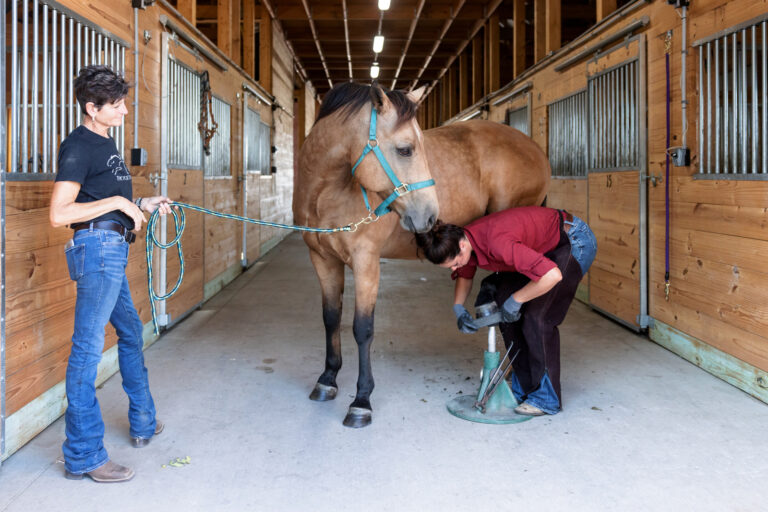
Sophisticated screening can help determine which horses are at greatest risk of sustaining a fatal leg injury during races, according to a new study published in the Journal of the American Veterinary Medical Association.
Horses calculated to have a risk factor of six on a 1-6 scale were 44 times more likely to suffer a fatal injury during a race than those with a risk factor of one, according to the study.
The researchers analyzed stride data from more than 28,000 races involving over 11,800 thoroughbred horses from July 2021-May 2024. The horses wore accelerometer-based inertial measurement unit sensors (IMU), and the researchers then analyzed data from the horses’ stride patterns to gauge their injury risk factors on the 1-6 scale.
Of those horses, 74 suffered fatal injuries, and “risk score and probability of fatal injury were exponentially related,” the study found. The most-at-risk animals had only 0.4 percent of the starts, but four percent of horses with a risk score of six incurred a fatal musculoskeletal injury.
Reporting of fatalities is not mandated across all American racing jurisdictions, and any reporting does not account for fatalities while training.
Data from post-mortem examinations indicate that approximately 93 percent of horses who suffered from fatal musculoskeletal injuries (FMI) had pre-existing bone conditions, but “thoroughbred racehorses still suffer FMI while racing and training because these pre-existing pathologies and disease processes are not overtly clinically apparent.”
Seeking a method to better identify high-risk horses led the authors to study the efficacy of the IMU sensors.
“Identification of the most-at-risk horses with IMU-derived data followed by thorough lameness examinations and, when indicated, advanced diagnostic imaging should decrease the fatal musculoskeletal injury rate,” the study concluded.
The study’s authors are Denise Mc Sweeney, DVM, MS; Yuan Wang, PhD; Scott E. Palmer VMD; Mikael Holmströem, DVM, PhD; Kevin D. Donohue, PhD; Kelly D. Farnsworth, DVM, MS; Macarena G. Sanz, DVM, PhD; David H. Lambert, BVSc, MRCVS; and Warwick M. Bayly, BVSc, PhD, DACVIM.
About the AVMA
Serving more than 108,000 member veterinarians, the AVMA is the nation’s leading representative of the veterinary profession, dedicated to improving the health and wellbeing of animals, humans and the environment. Founded in 1863 and with members in every U.S. state and territory and more than 60 countries, the AVMA is one of the largest veterinary medical organizations in the world. Informed by our members’ unique scientific training and clinical knowledge, the AVMA supports the crucial work of veterinarians and advocates for policies that advance the practice of veterinary medicine and improve animal and human health.
Related Reading
- 20 Risk Factors for Fatal Musculoskeletal Injury in Thoroughbred Racehorses
- Update: Thoroughbred Racehorse Safety Initiatives
- EVJ Highlights Ongoing Work to Improve Racehorse Safety
Stay in the know! Sign up for EquiManagement’s FREE weekly newsletters to get the latest equine research, disease alerts, and vet practice updates delivered straight to your inbox.




